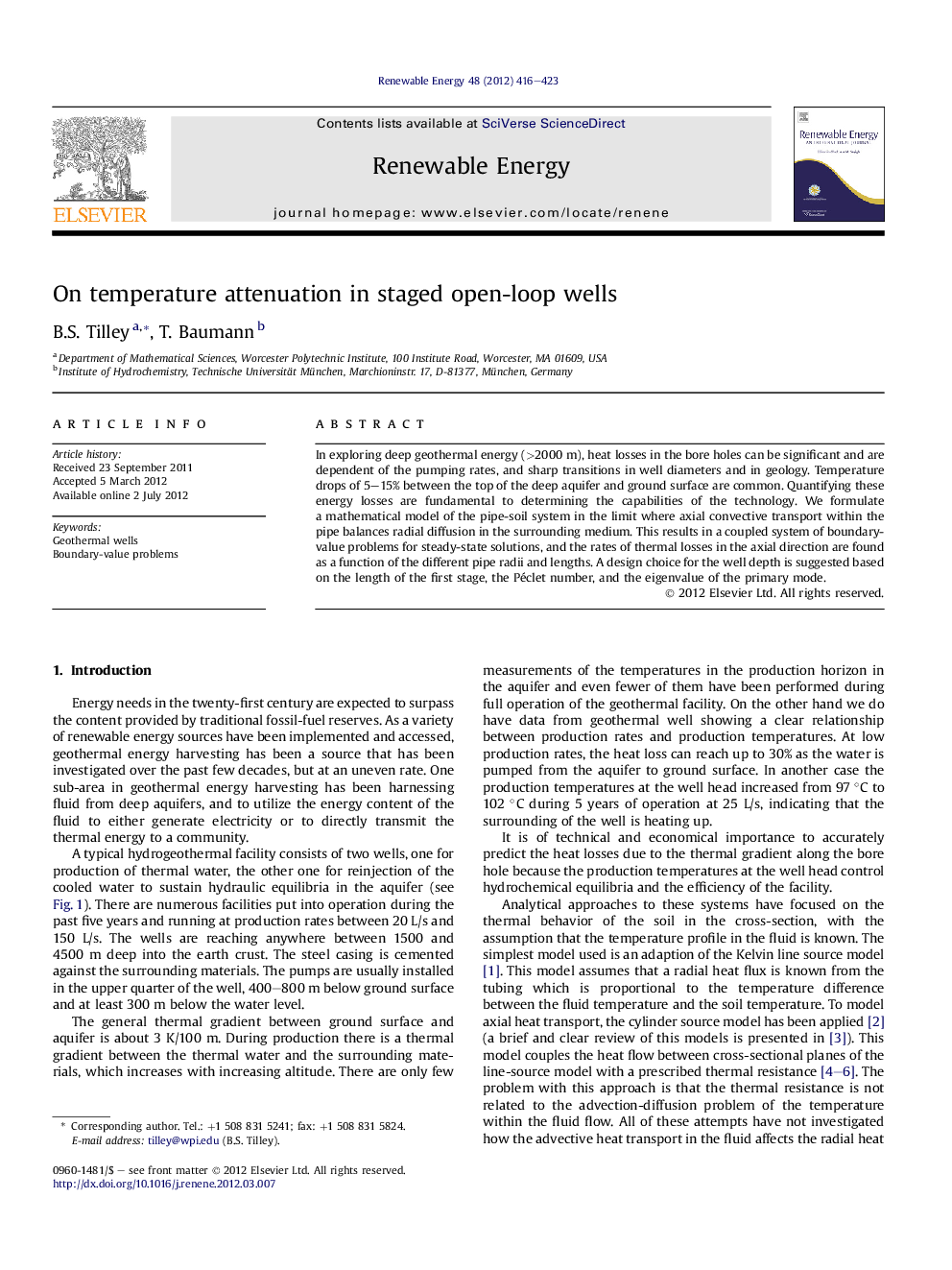| Article ID | Journal | Published Year | Pages | File Type |
|---|---|---|---|---|
| 300896 | Renewable Energy | 2012 | 8 Pages |
In exploring deep geothermal energy (>2000 m), heat losses in the bore holes can be significant and are dependent of the pumping rates, and sharp transitions in well diameters and in geology. Temperature drops of 5–15% between the top of the deep aquifer and ground surface are common. Quantifying these energy losses are fundamental to determining the capabilities of the technology. We formulate a mathematical model of the pipe-soil system in the limit where axial convective transport within the pipe balances radial diffusion in the surrounding medium. This results in a coupled system of boundary-value problems for steady-state solutions, and the rates of thermal losses in the axial direction are found as a function of the different pipe radii and lengths. A design choice for the well depth is suggested based on the length of the first stage, the Péclet number, and the eigenvalue of the primary mode.
► We model a deep-well geothermal system in order to quantify energy losses from source to surface. ► Axial heat transport competes with radial diffusive losses. ► Characteristic attenuation rate is found for staged wells. ► Attenuation factor in terms of well depth and flow rate is found.
